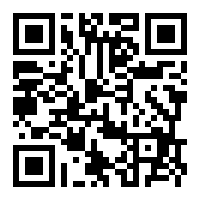PENERAPAN ALGORITMA YOLO UNTUK MENDETEKSI KUALITAS TELUR AYAM BERDASARKAN WARNA CANGKANG
Keywords:
Artificial_Intelligence, Automatic_Detection, Digital_Imaging, Egg_ClassificationAbstract
In the poultry industry, chicken egg quality is a crucial factor influencing the price and market appeal of the product. Manual assessment of egg quality based on shell color requires significant time and labor and is prone to human error. Therefore, the implementation of automation technology through artificial intelligence (AI) is necessary to enhance the efficiency and accuracy of this process. The YOLO (You Only Look Once) algorithm is a fast and accurate object detection method that can be applied to classify chicken eggs based on shell color. This research aims to develop an automatic detection system using YOLO to identify and categorize the quality of chicken eggs based on shell color. Images of chicken eggs were collected and annotated to train the YOLO model. After training, the model was tested on a new dataset to evaluate its detection and classification performance. The results of the study indicate that the YOLO algorithm can detect and classify chicken eggs with high accuracy, reducing the need for manual labor and speeding up the quality assessment process. The implementation of this system is expected to improve operational efficiency in the poultry industry, ensure consistent product quality, and provide an innovative solution to the challenges in chicken egg quality assessment.
References
S. Nugraha dan Q. Aulia, “Image Classification Untuk Telur Ayam Menggunakan Smartphone Android Dengan Convolutional Neural Networks (Cnn),” BERNAS J. Pengabdi. Kpd. Masy., vol. 5, no. 2, hal. 1278–1285, 2024, [Daring]. Tersedia pada: https://doi.org/10.31949/jb.v5i2.8187
F. Nurdiyansyah, S. Fatriana Kadir, I. Akbar, dan L. Ursaputra, “Penerapan Convolutional Neural Network Untuk Deteksi Kualitas Telur Ayam Ras Berdasarkan Warna Cangkang,” J. Mnemon., vol. 7, no. 1, hal. 40–47, 2024, doi: 10.36040/mnemonic.v7i1.8767.
R. R. M. A. R. Maulana, F. Rizal, dan W. J. Shudiq, “Implementasi Algoritma Convolutional Neural Network (Cnn) Untuk Deteksi Kesegaran Telur Berbasis Android,” Jusikom J. Sist. Komput. Musirawas, vol. 8, no. 1, hal. 1–10, 2023.
M Mujiono, A. K. Nalendra, dan E. H. Candrapuspa, “Penerapan Logika Fuzzy pada Alat Pendeteksi Kualitas Telur Berbasis Mikrokontroler Arduino,” Gener. J., vol. 7, no. 1, hal. 8–13, 2023, doi: 10.29407/gj.v7i1.17239.
F. Agustina, “Deteksi Kematangan Buah Pepaya Menggunakan Algoritma YOLO Berbasis Android,” J. Ilm. Infokam, vol. 18, no. 2, hal. 70–78, 2022, doi: 10.53845/infokam.v18i2.320.
A. Ferbista Direja, Y. Cahyana, dan K. A. Baihaqi, “Implementation of the Yolov8 Method To Detect Work Safety Helmets,” J. Tek. Inform., vol. 5, no. 3, hal. 865–871, 2024, [Daring]. Tersedia pada: https://doi.org/10.52436/1.jutif.2024.5.3.2005
I. Supiyani dan N. Arifin, “Identifikasi Nomor Rumah Pada Citra Digital Menggunakan Neural Network,” Method. J. Tek. Inform. dan Sist. Inf., vol. 8, no. 1, hal. 18–21, 2022, doi: 10.46880/mtk.v8i1.921.
S. A. Harjanto, M. Nurhaliza, J. Hezekiah, dan T. Sagala, “2024 Madani : Jurnal Ilmiah Multidisipline Optimalisasi Deteksi Anomali Untuk Pemfilteran Log dan Integrasi Dengan SIEM Menggunakan Machine Learning 2024 Madani : Jurnal Ilmiah Multidisipline,” vol. 2, no. 7, hal. 266–275, 2024.
A. B. Prakosa, Hendry, dan R. Tanone, “Implementasi Model Deep Learning Convolutional Neural Network (CNN) Pada Citra Penyakit Daun Jagung Untuk Klasifikasi Penyakit Tanaman,” J. Pendidik. Teknol. Inf., vol. 6, no. 1, hal. 107–116, 2023.
A. Mulyanto, E. Susanti, F. Rossi, W. Wajiran, dan R. I. Borman, “Penerapan Convolutional Neural Network (CNN) pada Pengenalan Aksara Lampung Berbasis Optical Character Recognition (OCR),” J. Edukasi dan Penelit. Inform., vol. 7, no. 1, hal. 52, 2021, doi: 10.26418/jp.v7i1.44133.
Downloads
Published
How to Cite
Issue
Section
License
Copyright (c) 2024 Sri Ayu Ningsih, Resti Ajeng Sutiani, Ni Made Sri Ulandari, Rizal Adi Saputra

This work is licensed under a Creative Commons Attribution 4.0 International License.











